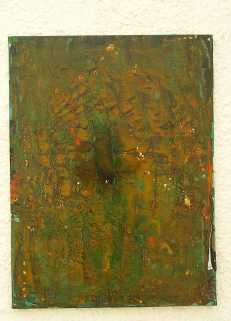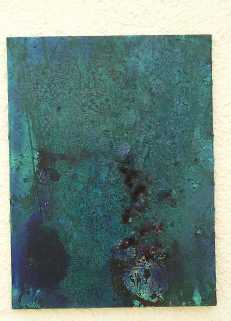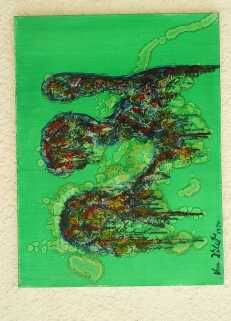Cause for concern in Australasia
| Australasia • Tundra |
 |
 |
Antipodes Subantarctic Islands tundra
Mammalian predators and grazers have been introduced on all the islands, creating problems for native species. And marine mammals that were once overhunted now face pressure from accidental entanglements in fishing nets. |
| Download - Full Size (PayPal) |
|
|
|
|
|
Painting 00145 |
National Geographic's Wildworld |
| Australasia • Mediterranean Forests, Woodlands, and Scrub |
 |
 |
Coolgardie woodlands
With its nutrient-poor soils, this area is not suitable for agriculture. But it has long been mined for gold and nickel. Cutting of woodlands for fuel and building material for mining operations have taken a toll on this ecoregion. |
| Download - Full Size (PayPal) |
|
|
|
|
|
Painting 00146 |
National Geographic's Wildworld |
| Australasia • Mediterranean Forests, Woodlands, and Scrub |
 |
 |
Esperance mallee
The main land uses in this ecoregion are farming and livestock grazing. Over-irrigation, increased development, and habitat fragmentation are all serious threats. The western whipbird has declined due to the burning and destruction of mallee habitat. Most mallee habitat is privately owned and is quickly being degraded. Introduced and feral animals, such as foxes, prey on native animals and destroy native vegetation. |
| Download - Full Size (PayPal) |
|
|
|
|
|
Painting 00147 |
National Geographic's Wildworld |
| Australasia • Mediterranean Forests, Woodlands, and Scrub |
 |
 |
Eyre and York mallee
This area is densely populated compared to other regions of Australia and native vegetation has largely been cleared for agriculture, mostly wheat farming. Feral and introduced animals also pose a problem and some iron mining takes place as well. |
| Download - Full Size (PayPal) |
|
|
|
|
|
Painting 00148 |
National Geographic's Wildworld |
| Australasia • Mediterranean Forests, Woodlands, and Scrub |
 |
 |
Jarrah-Karri forest and shrublands
Both clearcutting and selective logging are serious threats, as is dieback--a disease that attacks jarrah trees and other native plants. A great deal of the forest left is protected as a national park. Dams for water supplies have been constructed in forest areas. Feral and introduced animals, especially foxes, prey on native wildlife. Bauxite mining previously occurred here, but there has been some reforestation at old mining sites. |
| Download - Full Size (PayPal) |
|
|
|
|
|
Painting 00149 |
National Geographic's Wildworld |
All paintings © Copyright EqualEarth.com on behalf of Van Xilef.

